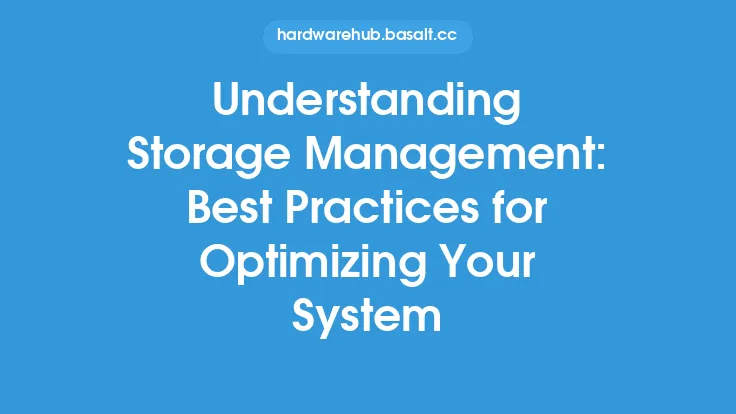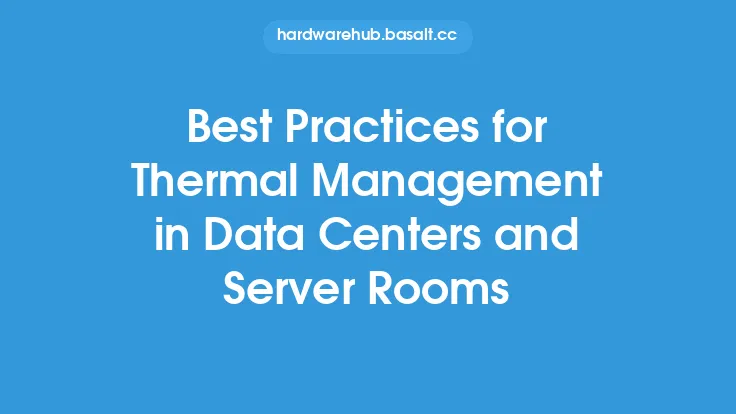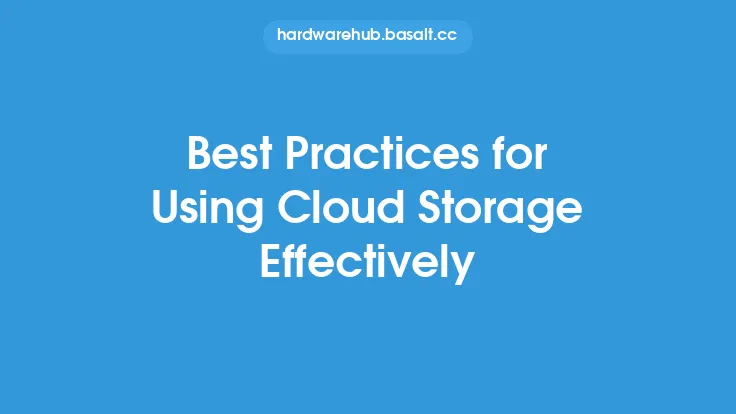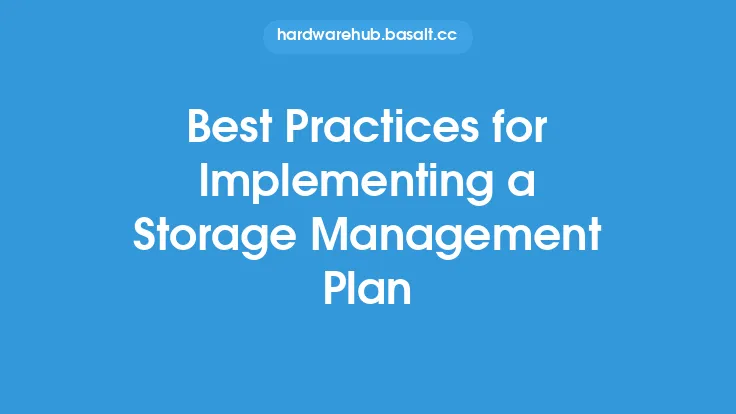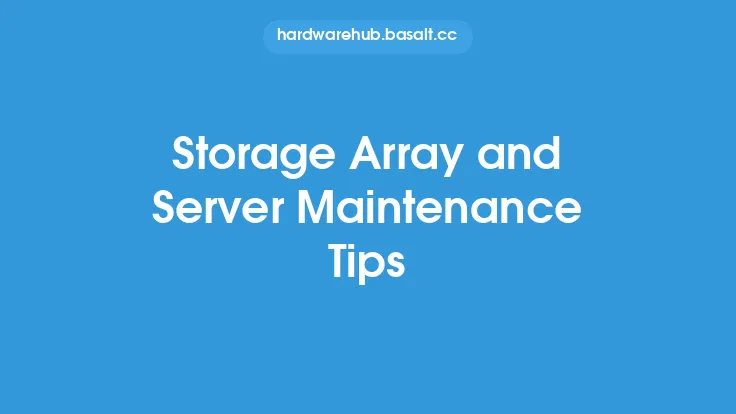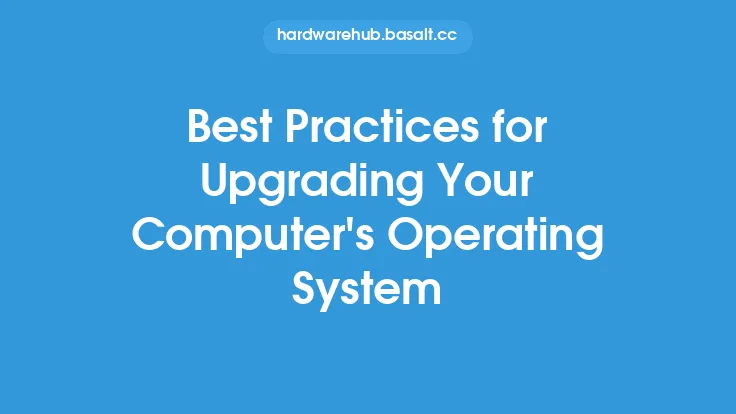When it comes to configuring a storage server, there are several best practices to keep in mind to ensure optimal performance, reliability, and security. A well-configured storage server is essential for any organization that relies on storing and retrieving large amounts of data. In this article, we will explore the key considerations for configuring a storage server, including hardware selection, operating system configuration, storage array setup, and network connectivity.
Introduction to Storage Server Configuration
Configuring a storage server involves several steps, including selecting the right hardware, installing and configuring the operating system, setting up the storage array, and configuring network connectivity. The goal of storage server configuration is to create a system that is optimized for performance, reliability, and security. This requires careful consideration of several factors, including the type of data being stored, the number of users who will be accessing the data, and the level of redundancy and failover required.
Hardware Selection
The first step in configuring a storage server is to select the right hardware. This includes the server itself, as well as the storage devices that will be used to store the data. When selecting a server, consider the following factors:
- Processor speed and number of cores: A faster processor with multiple cores will provide better performance and support more users.
- Memory: Adequate memory is essential for storing data in cache and providing fast access to frequently used files.
- Storage capacity: The storage capacity of the server will depend on the amount of data that needs to be stored. Consider using a combination of hard disk drives (HDDs) and solid-state drives (SSDs) to provide a balance between capacity and performance.
- Redundancy: Consider using redundant components, such as power supplies and fans, to ensure that the server remains operational in the event of a component failure.
Operating System Configuration
Once the hardware has been selected, the next step is to install and configure the operating system. The operating system provides the foundation for the storage server, and its configuration will have a significant impact on performance and security. When configuring the operating system, consider the following factors:
- File system: The file system used by the operating system will determine how data is stored and retrieved. Common file systems include NTFS, HFS+, and ext4.
- Disk management: The operating system's disk management capabilities will determine how storage devices are configured and managed. Consider using a disk management system that provides features such as RAID and disk pooling.
- Security: The operating system's security features will determine how access to the data is controlled. Consider using features such as authentication, authorization, and encryption to protect the data.
Storage Array Setup
The storage array is the heart of the storage server, and its setup will have a significant impact on performance and reliability. When setting up the storage array, consider the following factors:
- RAID configuration: RAID (Redundant Array of Independent Disks) provides a way to combine multiple storage devices into a single logical unit. Common RAID configurations include RAID 0, RAID 1, and RAID 5.
- Disk configuration: The disk configuration will determine how data is stored and retrieved. Consider using a combination of HDDs and SSDs to provide a balance between capacity and performance.
- Storage pool: A storage pool provides a way to combine multiple storage devices into a single logical unit. Consider using a storage pool to provide a flexible and scalable storage solution.
Network Connectivity
The final step in configuring a storage server is to configure network connectivity. This will determine how users access the data stored on the server. When configuring network connectivity, consider the following factors:
- Network protocol: The network protocol used by the storage server will determine how data is transmitted over the network. Common network protocols include NFS, SMB, and iSCSI.
- Network interface: The network interface will determine how the storage server connects to the network. Consider using a high-speed network interface, such as a 10GbE or 40GbE interface.
- Authentication: The authentication mechanism used by the storage server will determine how access to the data is controlled. Consider using features such as Kerberos or Active Directory to authenticate users.
Security Considerations
Security is a critical consideration when configuring a storage server. The storage server will be storing sensitive data, and it is essential to ensure that this data is protected from unauthorized access. When configuring security, consider the following factors:
- Authentication: The authentication mechanism used by the storage server will determine how access to the data is controlled. Consider using features such as Kerberos or Active Directory to authenticate users.
- Authorization: The authorization mechanism used by the storage server will determine what actions users can perform on the data. Consider using features such as access control lists (ACLs) to control access to the data.
- Encryption: The encryption mechanism used by the storage server will determine how data is protected from unauthorized access. Consider using features such as SSL or TLS to encrypt data in transit.
Monitoring and Maintenance
Once the storage server has been configured, it is essential to monitor and maintain it to ensure optimal performance and reliability. When monitoring and maintaining the storage server, consider the following factors:
- Performance monitoring: The performance of the storage server should be monitored regularly to ensure that it is operating within optimal parameters. Consider using features such as disk usage monitoring and network traffic monitoring to identify potential issues.
- Error logging: The error log should be monitored regularly to identify potential issues. Consider using features such as email alerts or SNMP traps to notify administrators of potential issues.
- Firmware updates: The firmware of the storage server should be updated regularly to ensure that it has the latest features and security patches. Consider using features such as automatic firmware updates to simplify the update process.
Conclusion
Configuring a storage server requires careful consideration of several factors, including hardware selection, operating system configuration, storage array setup, and network connectivity. By following the best practices outlined in this article, administrators can create a storage server that is optimized for performance, reliability, and security. Remember to monitor and maintain the storage server regularly to ensure optimal performance and reliability, and to stay up-to-date with the latest security patches and features.
